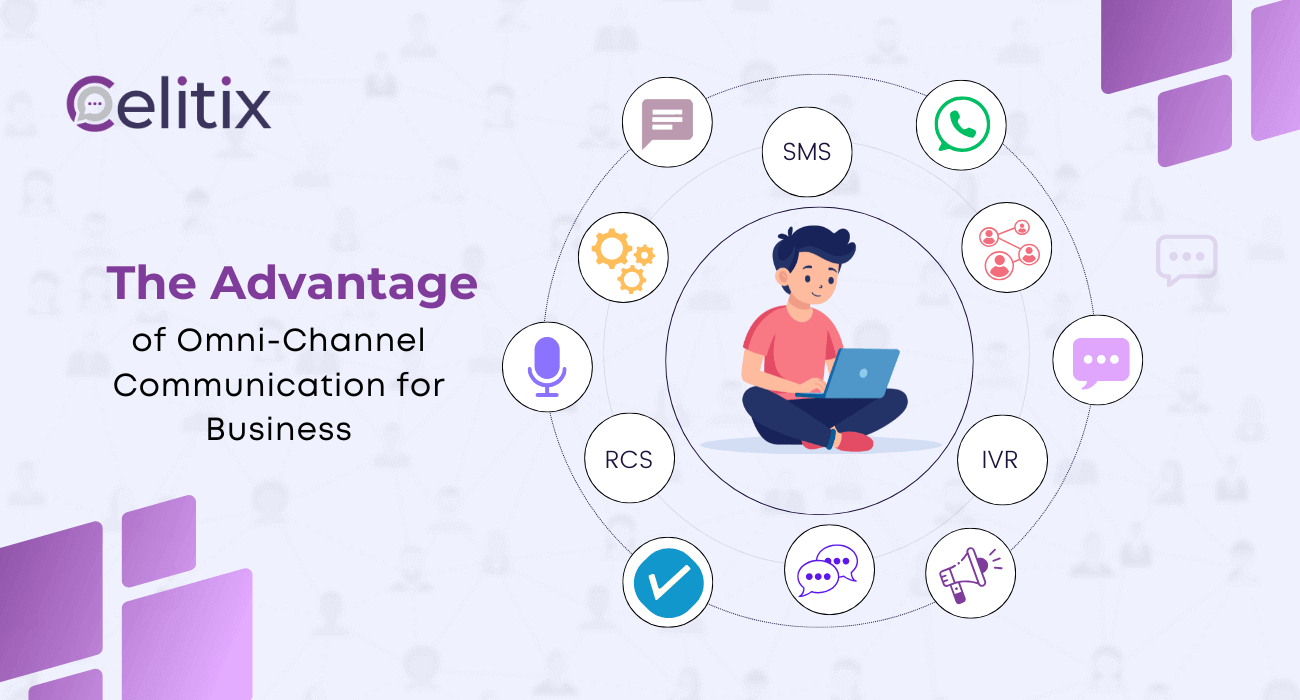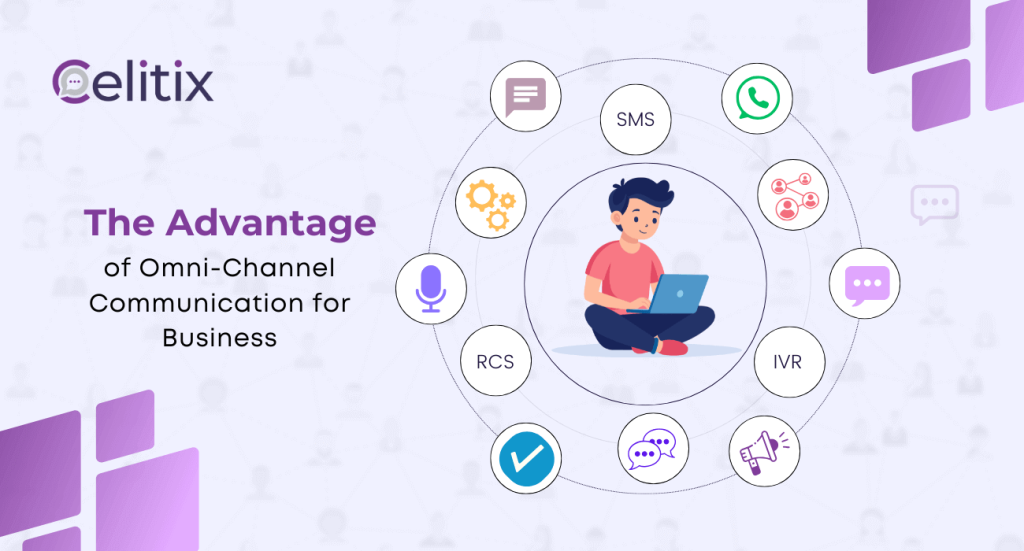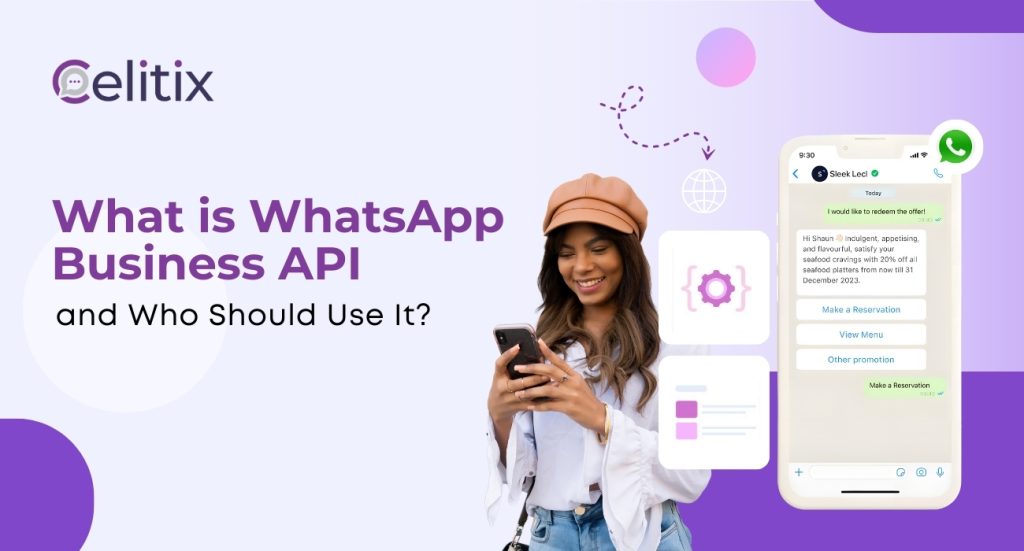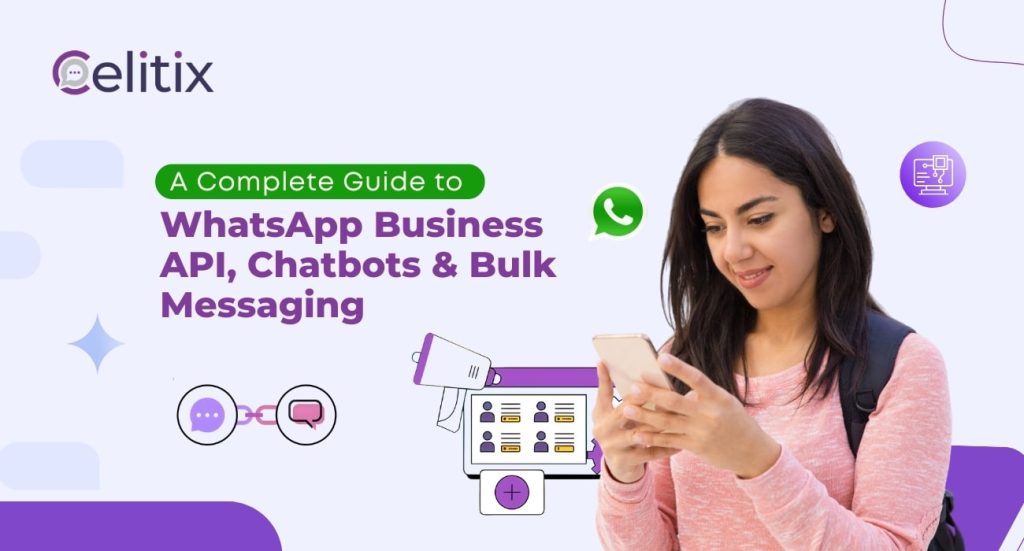Things are changing faster than ever before, and getting increasingly unpredictable. In uncertain times like these, building something takes more than courageous action: it takes intelligence, especially through Omni-Channel Communication to ensure adaptability and reach.
Thankfully, you don’t have to do it alone! There are countless ways to do more with less, and staying aware keeps you ahead. Let us tell you all about the winning strategy for online success in 2025.
What is Omni-channel Communication?
There are many ways to reach your audience. While organic reach on social media platforms is all the craze, leveraging Omni-Channel Communication, including traditional channels like door-to-door sales and newspaper ads, remains effective in various places.
Options are everywhere, but each one has its place and caters to specific needs. Your ideal marketing mix depends on you, your target groups and where you’re going, but no matter what, you’ll have to diversify to some extent.
Simply put, omnichannel communication is a strategic framework that integrates and connects all your relevant channels while keeping the intended receiver at the centre.
Multi-Channel vs Omni-Channel Communication

If you’re well-versed in digital marketing: an Omnichannel Framework is the next step in the evolution of marketing, sales, & support funnels. But it’s more than that because a funnel treats people as pinballs.
Multichannel Framework: Traditional Sales Funnels
The idea of a funnel was to create various ways for your intended audience to reach you on every major platform. It was like setting up a trap to get sales, using perceived value as bait.
The strategy? Establish a presence on every channel with a major audience, linking it to the proverbial cash register. Info-rich articles on websites to get traffic from Google, posts on social media, ads in newspapers etc.
The aim was to capture as many people as possible by catching their interest, ideally by providing them a taste of your value, but more typically with a hook or false promise.
Ultimately, Multichannel communication is characterised by broadcasting on disconnected, separate channels. This framework focuses on multiple channels more than users. It starts by putting a brand’s website at the top and puts the customers at the bottom.
Omnichannel: Funnels Reimagined
The old model has a small problem: people aren’t pinballs, numbers, or mindless drones to be manipulated. They dislike being treated as instruments for big brands to play like a fiddle.
The numbers are in, and people mistrust manipulative promotions more than ever before. People are emotional creatures who rationalise. They like to feel good and stick with people who treat them well.
Here’s where an omnichannel communication framework shines. It also leverages multiple channels & platforms to meet users where they are, but the whole thing is designed around the consumer’s needs.
In a nutshell, an omnichannel framework can be defined by three simple points:
- Interconnection of all channels of communication.
- Creating an exceptionally seamless experience for users.
- Integration of all touchpoints. For example, an omnichannel brand’s SMS list knows what they told you by email, and their in-store salesperson knows both, to avoid repetition &/or miscommunication.
While multichannel frameworks (like full-stack sales funnels & multichannel ad campaigns) are still a great way to reach your customers and let them find you, it is very much promotion-driven.
The astute business owner in 2024 knows the importance of focusing on mastering the soft sell. Moving into 2025, providing unreasonable value & hospitality will be essential to success.
Omnichannel frameworks are especially well-suited to craft exceptional experiences for users, clients, and customers alike. Platforms like Celitix can help.
Why Omni-Channel Communication is a Game-Changer
A business looking to succeed in 2025 faces unique challenges, but some things remain true. For one, you can’t be a leader by following everyone else. Nowadays, it is expected for a brand to have a comprehensive online presence.
If a company doesn’t have a Google My Business profile, an email, a phone number, accounts on major social media platforms, and a website, many consumers doubt its legitimacy.
This is the standard people expect, but if you stick to what’s expected, you’ll never be extraordinary. We say: it’s not what you do but how you do it. Every company will invest in these channels, and information overload becomes inevitable.
What can set you apart is how well your brand connects all its touchpoints to create better experiences. Imagine being a safe, reliable, and consistent source of value in a market flooded with shameless self-promotion. The potential is exciting.
This is not just for big brands; an omnichannel framework can transform ROI for even a medium-sized to small business. It’s not about having massive budgets, it’s about doing a few things better than the rest.
So, stop trying to match the competition when you want to beat them. Stop investing in things that give no returns. Do more, be better, and get resourceful by using every tool.
6 Key Advantages of Omni-Channel Communication

Getting down to brass tacks, there are various concrete benefits of omnichannel communication for business owners, their teams, and the brands they represent. Here are the biggest benefits.
1. Save Time Through Automation
Automation in marketing has the potential to scale the unscalable. No social media post can top the exceptional prowess of a seasoned salesman in closing the deal, but a chatbot can help by improving lead quality through qualification.
Building upon the linear sales funnel to make it circular, connecting all touchpoints saves a company time and resources. It does the same for customers, as finding the answer to their query online is easier than talking to a representative.
2. Brand Consistency
Trust is the best conversion metric, but it’s hard to measure through KPIs. Showing up regularly to deliver on the brand’s promise and reinforce the message goes a long way to cement you in people’s lives.
By ensuring that every possible way for your customers to find you connects well with each other, you automatically ensure a consistent brand experience. However, this can be hard for any team to manage itself.
That’s why an integrated communication platform like Celitix allows you to manage all your direct channels from a single, user-friendly dashboard. Digital marketing’s growing potential is worth the investment.
3. Customer Retention & Loyalty
Harward Business School famously stated in 2014 that as little as a 5% increase in customer loyalty & retention can boost profit margins by a whopping 25-95%. Yet marketers still struggle with building brand loyalty.
Investing in your communication systems can go a long way toward improving the customer experience. What’s more, even considering doing so or looking into it might make you consider your customer service experience.
An outstanding quality of service and a brand that not only inspires with its message but whose representatives embody those values are the secrets to improving retention and nurturing loyalty.
4. Customer Experience & Satisfaction
It’s one thing to deliver the product or service that the customer pays for; it’s another to do it in a way that makes them feel something special. Omnichannel communication goes beyond simple transactions and builds relationships.
By making guides & resources easier to find through digital integrations like PDFs shared on WhatsApp & RCS, and automating feedback, you make customers feel heard, understood, and cared for.
5. Boosting Engagement
The most creative uses of communication technology tend to give the best results for brands because people have come to expect mere transactions from them. Taking polls, surveys, and holding free contests for a cause are just some excellent ways that smart brands nurture goodwill with their target audiences.
Direct channels like RCS, IVR, SMS, WhatsApp, 2 Way SMS, & Missed Call Services make all this possible at viable costs when combined with social media campaigns. You can find all these, along with development solutions on our platform.
6. Improve ROI
The biggest benefit of embracing an omnichannel perspective is the strategic thinking that comes from it. When every marketing, sales, & support communication is designed with the user experience, it provides real value.
Real value leads to better results in the long term. You can either focus on the short term:
- Running offers, promotions, discounts, and ads to get temporary jumps in sales. Lower your prices, cut corners, and keep it up forever. This essentially leaves all your results up to luck, at the mercy of the market.
- Or, you can play the long-term game: build sustainable systems that consistently provide value, build the brand, and earn loyalty.
An omnichannel framework complements long-term strategies beautifully. Celitix’s enterprise messaging & voice solutions offer a variety of automated communication tools to improve your brand experience at a fraction of the cost.
Popular Use Cases of Omni-Channel Communication

Enough theory, let’s look at some concrete examples of how omnichannel communication works in practice. Here’s how an integrated communication system can help different industries:
- E-commerce: Consistent cart and browsing experiences across platforms. Abandoned cart recovery, Click to WhatsApp ads, easier support, & more!
- Retail: Blending online and in-store interactions. Let customers connect via QR codes, 2 Way SMS or Missed Call services to get catalogues, offers, etc.
- Customer Support: Unified live chat, email, and social media support from a single cloud-powered dashboard. Each team member can access it remotely.
How to Get Started with Omni-Channel
Start with some market research to determine your target audience, competition, and positioning. Then, plan out a strategy that you feel confident in. Include the channels you will include after considering the costs and your budget.
Align it as much as possible with your business’s ground reality. What are your sales, support, marketing, and service procedures? Which ones work well, and what requires improvement?
Research and planning are really at the heart of implementing a solution. 90% of the work is preparation, 5% is implementation, and just 5% is iteration or feedback. Map out customer journeys, and align internal teams & databases.
Finally, leverage cutting-edge communication platforms like Celitix to make the most of your customer database, mobile apps, and other channels. With this CPaaS solution, you can implement your strategy more easily and get results faster.
Conclusion
If you think investing in customer experience is expensive, wait till you get the bill for neglecting to do so! If you play the long game, keep your head down, and humbly build something meaningful, you skyrocket your chances of success.
Also, keep in mind that there are many ways for a company to win, but only one surefire way to lose: run out of money. Entrepreneurship is a game of survival. But survival requires more than just getting by.
Small and growing businesses can learn to start right with an omnichannel perspective and use CPaaS platforms like Celitix on a small scale with low-volume communication, paying only for what they need.
If you are fortunate enough to be part of a large & sustainable organisation, invest in your communication systems and customer relationships to avoid getting overtaken or overthrown by technological disruptions.
Frequently Asked Questions (FAQs)
Q1. Why is omnichannel better than multichannel communication?
Omni-channel integrates all customer touchpoints, ensuring a seamless, consistent experience, while multi-channel operates in silos with disconnected interactions.
Q2. What industries benefit most from omnichannel communication?
E-commerce, retail, finance, healthcare, and travel industries benefit significantly, as they rely on unified customer interactions across platforms.
Q3. How does omni-channel communication improve ROI?
It enhances engagement, reduces churn, and optimises marketing spend by delivering personalised and consistent customer experiences.
Q4. Is omnichannel suitable for small businesses?
Yes! Platforms like Celitix CPaaS offer scalable solutions that allow small businesses to start small and grow their capabilities over time.
Q5. What’s the first step in implementing an omnichannel strategy?
Start by mapping your customer’s journey to identify key touchpoints and ensure consistent communication across channels.





